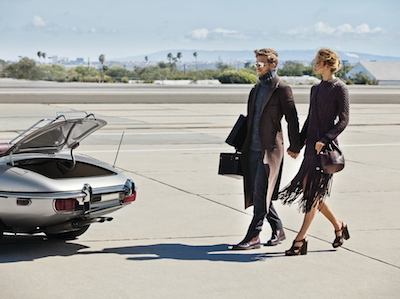 Affluent consumers
Affluent consumers
Understanding demographics is the first step to effective marketing, according to a new report by Unity Marketing.
Affluent consumers, defined in the study as those who make over $100,000 a year, slightly more than a fifth of households, are the fastest growing income bracket. Although economic factors are often foregrounded when discussing changes in wealth and buying patterns, understanding shifts in generations and the ratios of different age groups over time can help brands build long-term strategies without the uncertainties related to predicting the economy.
Demographic disruption is the biggest face that luxury brands will face in the United States market over the next ten years," said Pam Danziger, president of Unity Marketing, Lancaster, PA. "Brands must bridge the gap between the current consumer demographic, made up primarily of Baby Boomers and Generation Xers, to the next – the Millennials.
"This demographic shift will disrupt the traditional luxury market and require major changes in how luxury brands communicate, connect and sell to a new target customer with new ideas about luxury and what it means to him or her," she said. "Unity Marketing’s Luxury Report can help brands define the road map to the next generation, but studying and understanding how the young affluent HENRYs are increasingly impacting the luxury market today and how they are going to shape it in the future."
“Luxury Report USA” provides a detailed overview of prospects for the future luxury market, the demographic makeup of affluence, the trends in purchases and spending habits of affluent consumers, shopping destinations and consumers’ relationships with brands, purchase details and habits by sector, including experiential luxury, and the shifting connotations and meaning of luxury and attitudes toward finance among different groups of people, all through seven years of data.
King Henry
Among the key findings, the report advocates for defining affluence by income rather than wealth, as the former is more closely correlated with individuals' spending habits. Under this definition it is worth noting that the average income of the top 20 percent of households is $185,206 while the average for the top 5 percent is $322,243.
Those in the former groups are defined as HENRYs (high-earners-not-rich-yet), and although the total number of households in the U.S. only increased 2.5 percent from 2010-2013, the number of HENRY households increased at more than quadruple that rate. The HENRY market is about four times more valuable than the ultra-affluent, those with $250,000 incomes or more.
 Affluent couple, image courtesy Michael Kors
Although there is no age bracket for HENRYs, particular attention should be paid to those under 54, and particularly those from 35 to 44, who have not yet reached the age in which income normally peaks and typically spend more on luxury than those between 45 and 54.
Furthermore, the relatively small number of generation X compared to the age demographics bracketing it mean that the number of consumers in the age range in which people normally attain affluence and spend the most on luxury is small.
The number of consumers in affluent households aged 35-44 will decline until 2020 and consumption will be mostly by those in the 45-54 range that do not spend as much. However, from 2025 to 2030, this will reverse, making it crucial to target the less affluent, highly numbered 25-34 aspirationals who will move into more wealth over the next 10-15 years.
Affluent couple, image courtesy Michael Kors
Although there is no age bracket for HENRYs, particular attention should be paid to those under 54, and particularly those from 35 to 44, who have not yet reached the age in which income normally peaks and typically spend more on luxury than those between 45 and 54.
Furthermore, the relatively small number of generation X compared to the age demographics bracketing it mean that the number of consumers in the age range in which people normally attain affluence and spend the most on luxury is small.
The number of consumers in affluent households aged 35-44 will decline until 2020 and consumption will be mostly by those in the 45-54 range that do not spend as much. However, from 2025 to 2030, this will reverse, making it crucial to target the less affluent, highly numbered 25-34 aspirationals who will move into more wealth over the next 10-15 years.
 Luxury shoppers
Also of note, a long recession shrunk the prime window for many consumers, who grew older – thus less likely to buy luxury goods in the first place – and may have longer-lasting caution effects. The same is true of younger consumers, who may be more cautious about indulging. Barring another global recession, consumers entering the prime window of affluence will not have such strong concerns.
Indeed, consumer spending has been on decline since 2008, meaning it is lower since the emergence of the recession than it was at its start. Additionally, in 2010, they spent four times as much on luxury as HENRYs, but that number shrunk to only twice as much by 2014. The recession and age clusters of households have led to a luxury “drought.”
Although a luxury drought in the U.S combined with a boom in various emerging markets, the sheer size of the U.S. affluent population, both now and in the future, means that it would be a mistake for a brand to skip out on U.S. consumers for the time being. Instead, they should work now to get ahead of competition, start relationships and build loyalty.
"The US luxury market is the world’s largest, whether measured in revenues, as the Bain Altagamma report shows it is larger than the next four world markets combined, or by the numbers of affluent, with some 12.3 million millionaires according to the FRB data," Ms. Danziger said. "No matter which source is used, the U.S. still takes the lead in personal wealth. Given these facts, luxury brands cannot afford to ignore or underplay the importance of the U.S. market, but the underpinnings of the U.S. market is very different from that found anywhere else in the world.
"Are foreign tourists a reliable source for growth? Not likely," she said. "The value of international tourists as luxury consumers is dependent largely on the value of the dollar, which lately has gained strength against foreign currencies and so makes buying luxury goods in the U.S. less attractive than before. "Luxury brands need to focus on the U.S. consumers and understand their very unique and special perspective on luxury, how they define luxury and the role it plays in American lifestyles."
The times they are a-changin'
Demographic shifts offer more direct challenges for marketers as well. For example, for young HENRYs, the “luxury” label does not carry the same mystique as it has in the past or that it might for older consumers.
Instead, the word connotes over-priced and unaffordable goods even more than it defines craftsmanship or value. For these consumers, the values associated with the brand as well as the relative value in cost-per-use are more important.
Rather than marking themselves by wearing the most expensive brands they can afford, young HENRYs look to brands that reflect who they are, opting, for example, for an Ironman Triathlon watch instead of a Rolex and preferring to foster their own identity through their clothing, accessories and other goods rather than harnessing the brand’s (see story).
These shifts will only grow more pronounced as time goes on.
Luxury shoppers
Also of note, a long recession shrunk the prime window for many consumers, who grew older – thus less likely to buy luxury goods in the first place – and may have longer-lasting caution effects. The same is true of younger consumers, who may be more cautious about indulging. Barring another global recession, consumers entering the prime window of affluence will not have such strong concerns.
Indeed, consumer spending has been on decline since 2008, meaning it is lower since the emergence of the recession than it was at its start. Additionally, in 2010, they spent four times as much on luxury as HENRYs, but that number shrunk to only twice as much by 2014. The recession and age clusters of households have led to a luxury “drought.”
Although a luxury drought in the U.S combined with a boom in various emerging markets, the sheer size of the U.S. affluent population, both now and in the future, means that it would be a mistake for a brand to skip out on U.S. consumers for the time being. Instead, they should work now to get ahead of competition, start relationships and build loyalty.
"The US luxury market is the world’s largest, whether measured in revenues, as the Bain Altagamma report shows it is larger than the next four world markets combined, or by the numbers of affluent, with some 12.3 million millionaires according to the FRB data," Ms. Danziger said. "No matter which source is used, the U.S. still takes the lead in personal wealth. Given these facts, luxury brands cannot afford to ignore or underplay the importance of the U.S. market, but the underpinnings of the U.S. market is very different from that found anywhere else in the world.
"Are foreign tourists a reliable source for growth? Not likely," she said. "The value of international tourists as luxury consumers is dependent largely on the value of the dollar, which lately has gained strength against foreign currencies and so makes buying luxury goods in the U.S. less attractive than before. "Luxury brands need to focus on the U.S. consumers and understand their very unique and special perspective on luxury, how they define luxury and the role it plays in American lifestyles."
The times they are a-changin'
Demographic shifts offer more direct challenges for marketers as well. For example, for young HENRYs, the “luxury” label does not carry the same mystique as it has in the past or that it might for older consumers.
Instead, the word connotes over-priced and unaffordable goods even more than it defines craftsmanship or value. For these consumers, the values associated with the brand as well as the relative value in cost-per-use are more important.
Rather than marking themselves by wearing the most expensive brands they can afford, young HENRYs look to brands that reflect who they are, opting, for example, for an Ironman Triathlon watch instead of a Rolex and preferring to foster their own identity through their clothing, accessories and other goods rather than harnessing the brand’s (see story).
These shifts will only grow more pronounced as time goes on.
Now in the “turbulent teens” of the 21st century, luxury consumers are changing their mindset, forcing brands to evolve along with them, according to an executive from The Future Laboratory at the U.S. Retail & Luxury Futures Forum in New York on Oct. 21.
Presenting the results of a survey of United Kingdom and U.S. consumers it conducted this summer, The Future Laboratory found that “luxurians” in these countries are generally seeking out experiences over goods, craving a meaningful human connection from the brands they interact with. Brands need to respond with interactions that play to consumers’ intangible desires that exist outside of material ownership (see story).
"We’ve settled into a ‘new normal’ for the luxury market, marked by slow growth, cautious consumers looking to maximize their investment in value, and today too many brands are leaving them short," Ms. Danziger said.
Final Take Forrest Cardamenis, editorial assistant on Luxury Daily, New York
